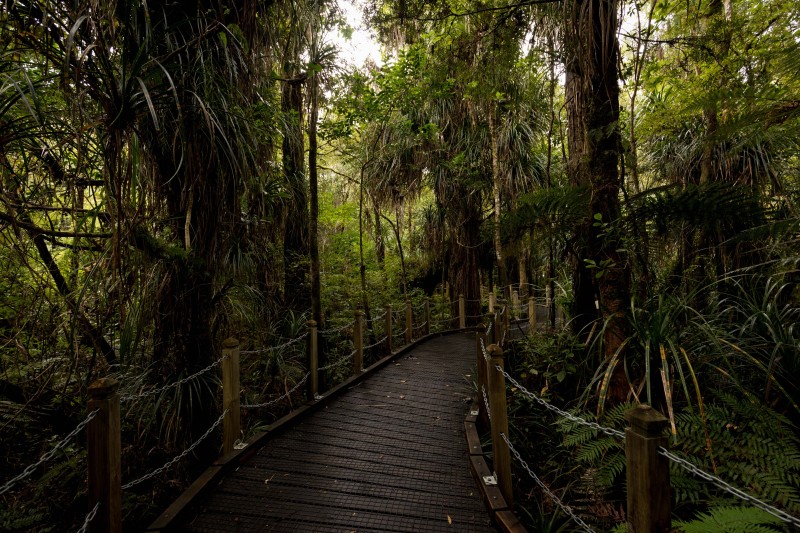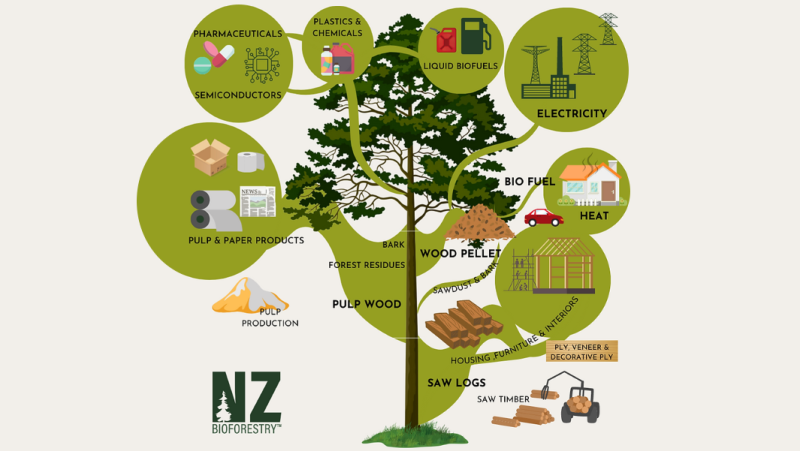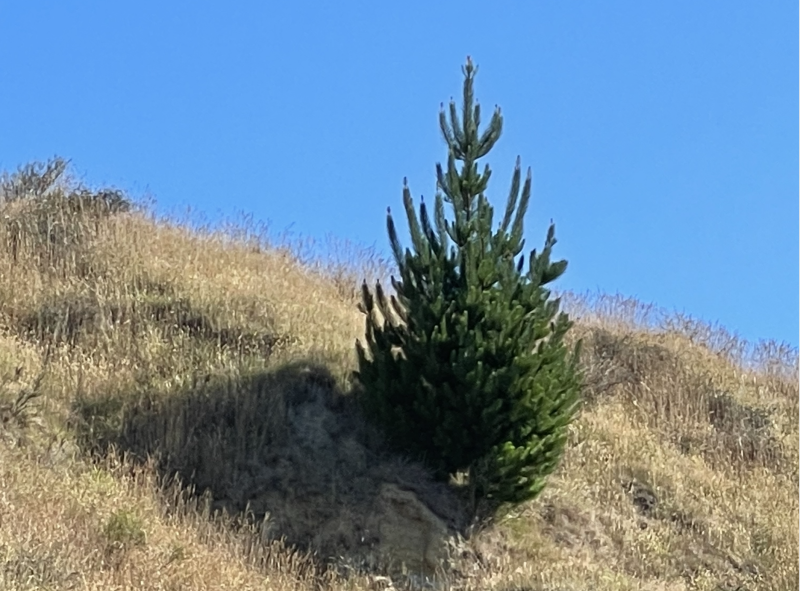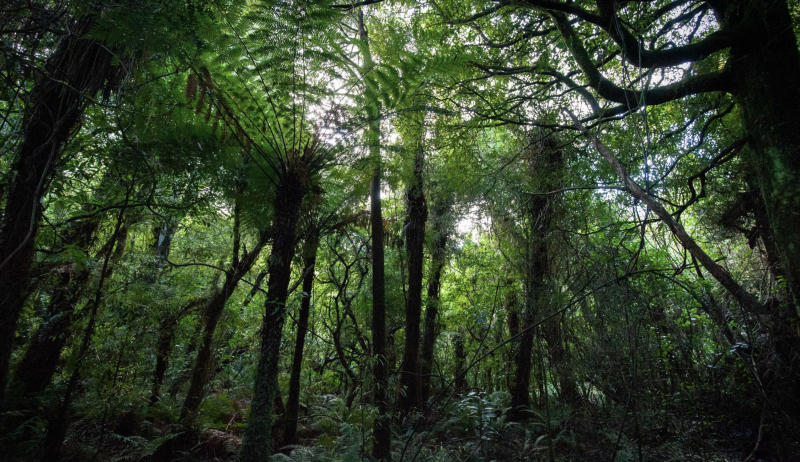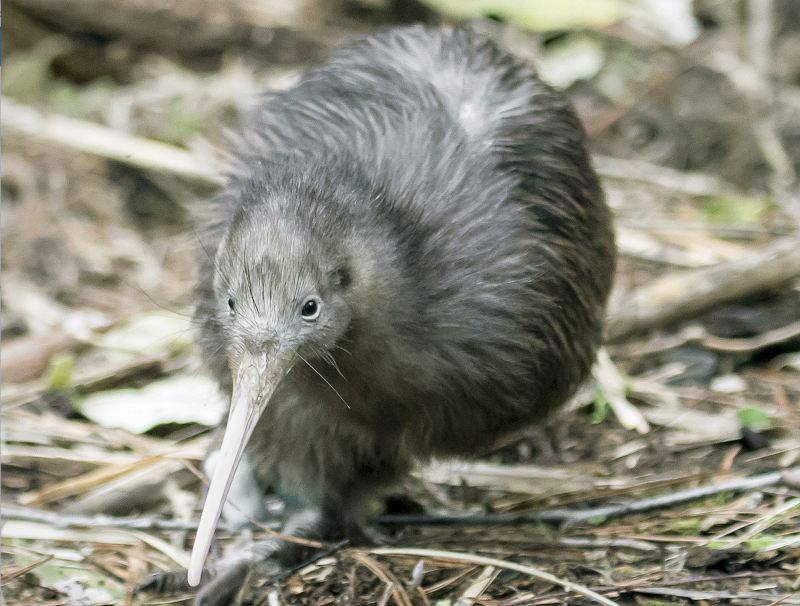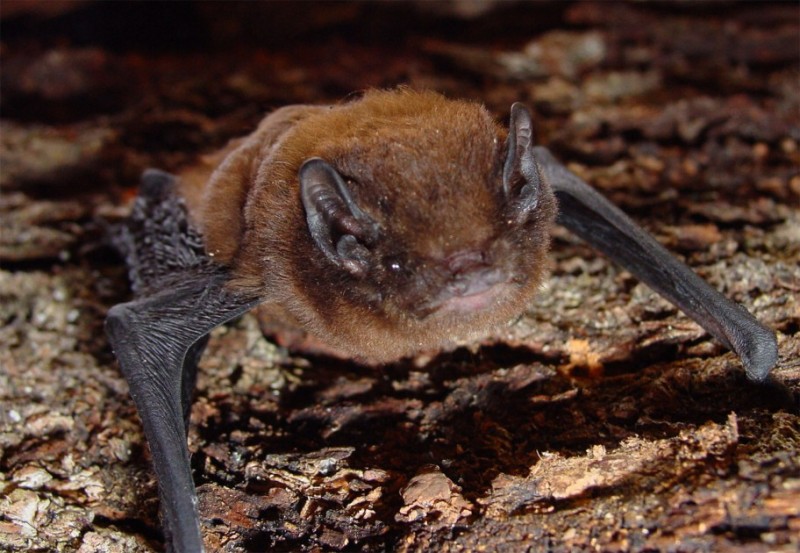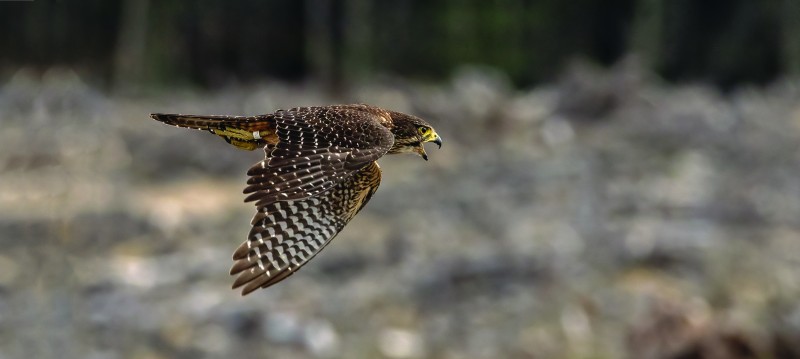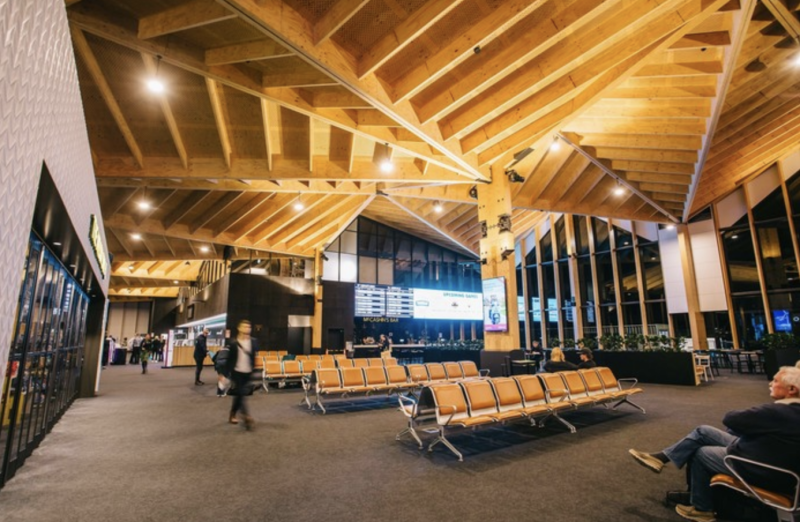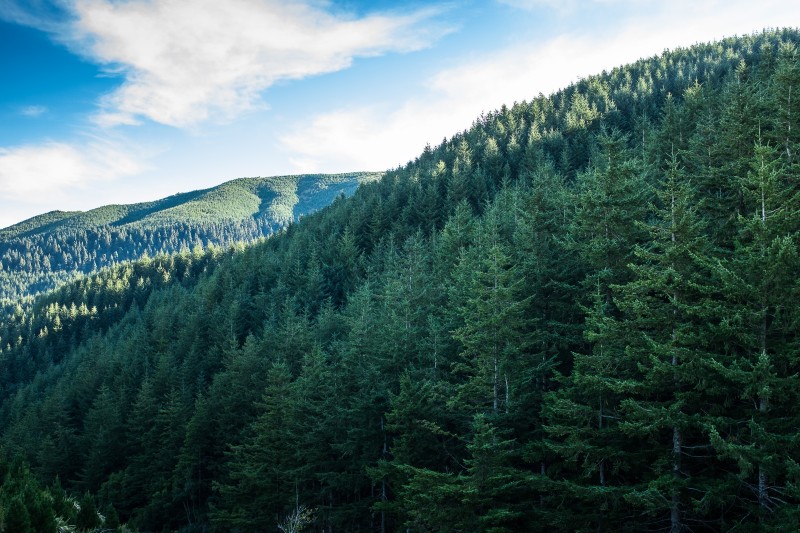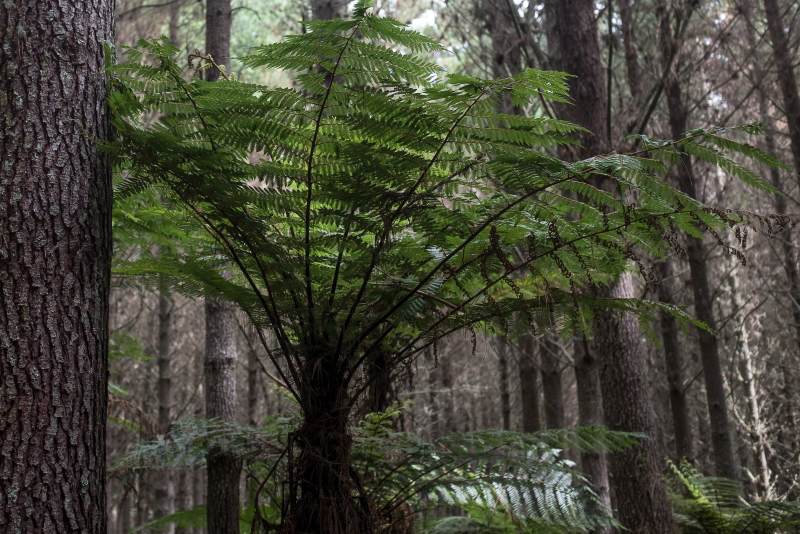Waipoua Forest on Northland’s western “Kauri Coast” is home to Tāne Mahuta (the Lord of the Forest), New Zealand’s largest living kauri tree. It is approximately 51.5 metres tall, 4.9 metres diameter, and estimated to be between 1250 to 2500 years old!
Nearby Te Matua Ngahere (the 'Father of the Forest') is the widest surviving kauri tree, with a trunk over five metres in diameter.
Waipoua Forest and neighbouring Mataraua and Waimā Forests are protected by the Department of Conservation. No milling of mature kauri trees is permitted, except under extraordinary circumstances such as for the carving of a waka.
Kauri are one of the longest living tree species in the world, living for 600 years on average. The oldest trees are reported to be over 1500 years old. Unfortunately, they are under threat from a pathogen that infects the trees through their roots and causes a condition known as ‘dieback’ disease. As the pathogen is soil-borne, it can be spread on footwear or vehicle tyres, so it’s important when visiting a kauri forest that you clean your shoes and gear before entering and when leaving, stay on tracks and away from kauri roots, and respect any track closures.
Find out more about how to protect our kauri here.
Watch this video to learn more about the work of the kaitiaki who protect Waipoua Forest.
YouTube
